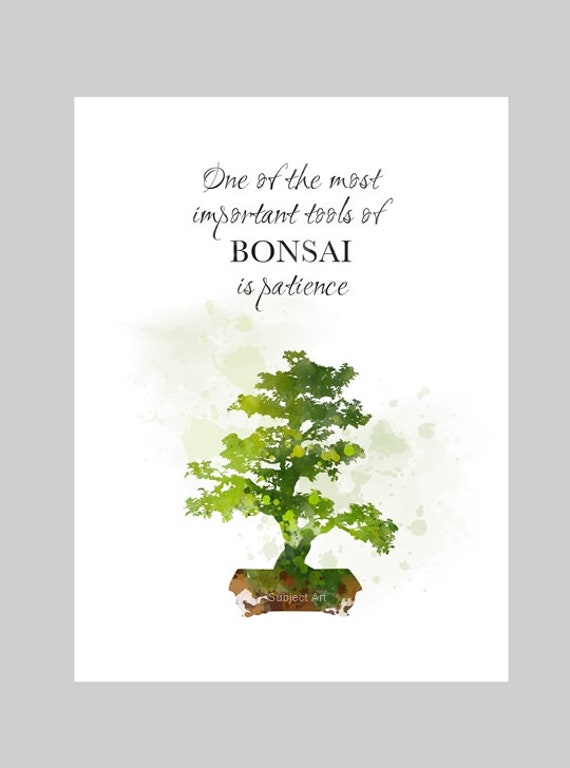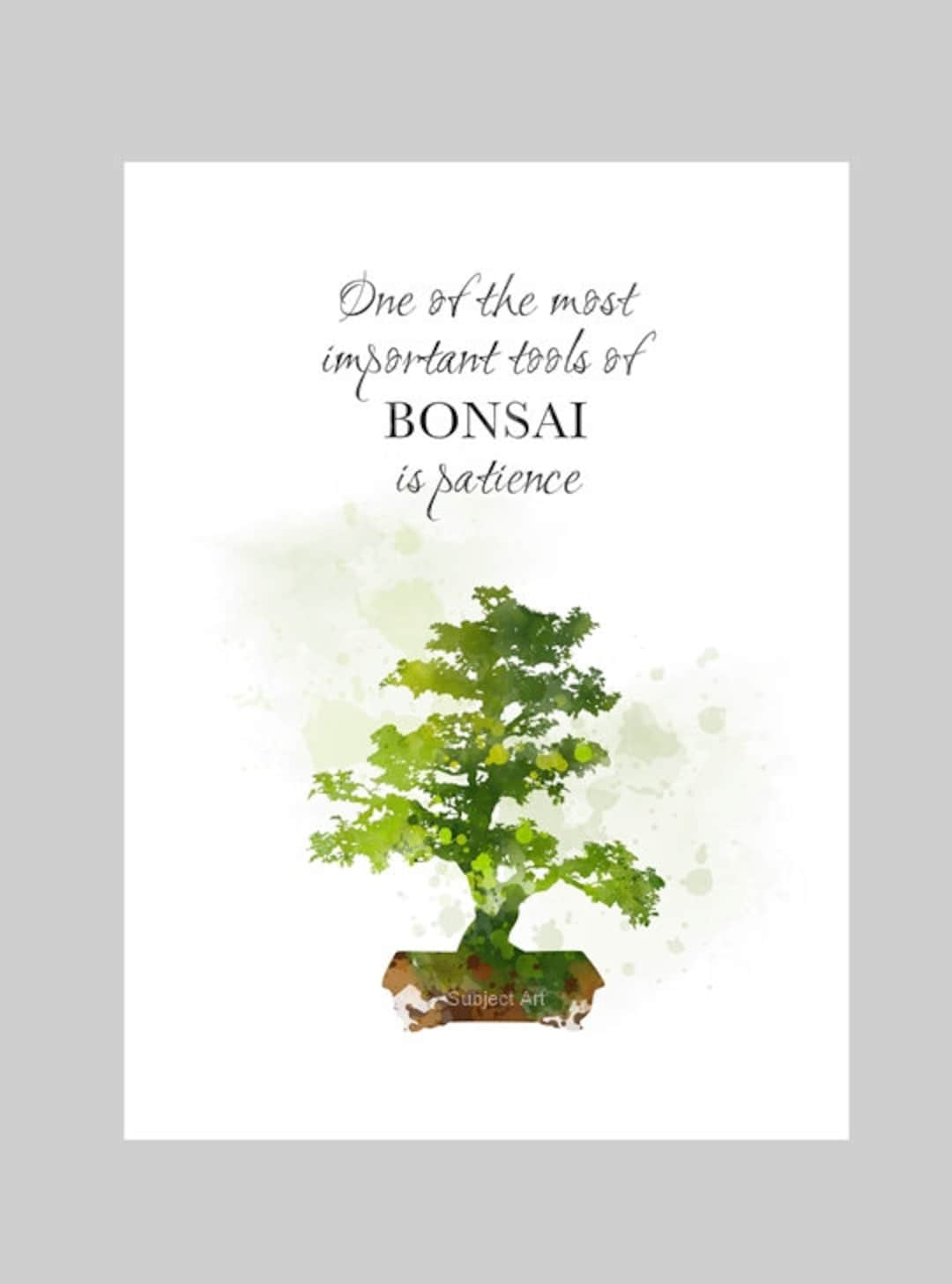The Bonsai tree symbolizes harmony, patience, and nature’s beauty. It represents a blend of artistic expression and horticultural skill.
Bonsai trees hold a special place in various cultures, particularly in Japan and China. These miniature trees embody the principles of Zen Buddhism, promoting tranquility and mindfulness. Bonsai cultivation is an art form that requires dedication, patience, and precision. Enthusiasts often find the process therapeutic, as it involves careful pruning and shaping.
Bonsai trees also serve as living sculptures, adding aesthetic value to homes and gardens. They remind us of the delicate balance between nature and human intervention. Overall, Bonsai trees are more than just plants; they are a testament to the art of living in harmony with nature.
Introduction To Bonsai Trees
Bonsai trees are tiny, beautiful trees grown in pots. They are special because they look like full-sized trees but are small. Bonsai means “planted in a container” in Japanese. People all over the world love them. These trees need care and attention. They teach patience and creativity. Bonsai trees can make any space feel peaceful and beautiful.
Origins And History
Bonsai trees started in China over a thousand years ago. The Chinese called it Penjing. It was an art form. Later, the Japanese adopted it. They made it famous. They focused on simplicity and natural beauty. Over time, bonsai became a symbol of Zen Buddhism. It represents harmony and balance. These trees have a rich and long history. They connect us to nature and tradition.
Global Popularity
Today, bonsai trees are loved worldwide. People from different cultures grow them. They are popular in homes and gardens. Bonsai clubs and shows are everywhere. People share tips and techniques. The art of bonsai is always evolving. It brings people together. Bonsai trees are symbols of peace and patience. They are more than just plants. They are living art.
Symbolism In Japanese Culture
The Bonsai tree holds a special place in Japanese culture. This miniature tree represents various elements of Japanese tradition and values. Its care and cultivation are seen as a form of art, deeply rooted in history.
Spiritual Significance
In Japanese culture, the Bonsai tree symbolizes harmony, peace, and balance. It is often used in Zen Buddhism practices to promote meditation and inner peace. The process of growing a Bonsai tree teaches patience and dedication, reflecting the spiritual journey.
People believe that tending to a Bonsai tree can bring good luck and fortune. The tree is often placed in homes and gardens to attract positive energy. This practice aligns with the concept of ‘Wabi-sabi’, which celebrates imperfection and the beauty of natural processes.
Aesthetic Principles
The Bonsai tree is also admired for its aesthetic beauty. It embodies the Japanese principle of ‘Kanso’ or simplicity. The tree’s design emphasizes minimalism, focusing on the essential elements to create a sense of calm.
Another aesthetic principle is ‘Fukinsei’, which means asymmetry. The Bonsai tree often has an irregular shape, symbolizing the natural, unrefined beauty found in nature. This principle encourages appreciation for the unique and imperfect aspects of life.
| Principle | Meaning |
|---|---|
| Wabi-sabi | Imperfection and natural beauty |
| Kanso | Simplicity and minimalism |
| Fukinsei | Asymmetry and irregularity |
The Bonsai tree’s importance in Japanese culture cannot be overstated. It is a symbol of spiritual and aesthetic principles that have been cherished for centuries.
Bonsai In Chinese Tradition
The bonsai tree holds deep cultural significance in Chinese tradition. It represents harmony, balance, and the intricate relationship between nature and humans. Understanding its roots can help appreciate its importance today.
Penjing And Bonsai
Penjing is the ancient Chinese art of creating miniature landscapes. It includes trees, rocks, and water features. Penjing is the precursor to bonsai. The practice dates back over a thousand years. It aims to recreate natural scenes in a small, controlled space. This art form spread to Japan, where it evolved into what we know as bonsai today.
| Feature | Penjing | Bonsai |
|---|---|---|
| Origin | China | Japan |
| Elements | Trees, rocks, water | Primarily trees |
| Focus | Natural landscapes | Individual trees |
Philosophical Roots
The philosophical roots of bonsai are deeply tied to Zen Buddhism. It emphasizes simplicity, patience, and harmony. The practice of cultivating bonsai teaches important life lessons. These include discipline, balance, and respect for nature.
In Chinese culture, bonsai also symbolizes the Taoist principle of yin and yang. This principle highlights the balance between opposite forces in nature. The miniature trees represent the harmony between human activity and the natural world.
Creating and maintaining a bonsai tree is a meditative process. It requires time, care, and attention. This practice encourages mindfulness and a deep connection to nature.

Credit: www.etsy.com
Bonsai And Zen Buddhism
The Bonsai tree holds a special place in Zen Buddhism. It’s not just a plant; it is a symbol of deep spiritual practice. Zen monks have used bonsai for centuries to achieve inner peace and harmony.
meditative Practice
Working with bonsai trees helps in meditation. The careful pruning and shaping of bonsai requires focus. This focus helps in clearing the mind. The repetitive actions promote a state of calm.
Monks often spend hours shaping their bonsai. Each cut and trim is a step towards mindfulness. This act becomes a form of moving meditation. It allows them to be present in the moment.
- Focus on each snip of the scissors.
- Observe the tree’s growth patterns.
- Feel the texture of the leaves and bark.
connection To Nature
Bonsai trees help create a deep connection to nature. They represent the natural world in a miniature form. Caring for a bonsai tree reminds us of the balance and beauty in nature.
Zen monks believe in living in harmony with the environment. Through bonsai, they bring a piece of nature into their daily lives. This practice teaches patience and respect for all living things.
By observing the bonsai, monks learn about the seasons. They see how the tree adapts to changes. This observation fosters a deep appreciation for life’s cycles.
- Notice the changing colors in fall.
- Watch new buds in spring.
- Respect the tree’s dormancy in winter.
Modern Interpretations
The Bonsai tree holds a special place in modern culture. It is not just a plant but an evolving art form. Many people see it as a symbol of patience and dedication.
Art Form Evolution
The art of Bonsai has changed over the years. It began in ancient China and then moved to Japan. Today, Bonsai is a global phenomenon. Different countries add their own styles and techniques.
Modern artists experiment with new shapes and species. They use wire to guide branches into unique forms. This makes each Bonsai tree a one-of-a-kind piece of art.
Bonsai In Popular Culture
Bonsai trees appear in movies, TV shows, and books. They symbolize wisdom, peace, and balance. Many famous characters own Bonsai trees. This adds to their cultural significance.
People often gift Bonsai trees for special occasions. They are seen as symbols of good luck and prosperity. This makes them popular in both homes and offices.
| Aspect | Modern Interpretation |
|---|---|
| Art Form | Global styles, unique shapes |
| Popular Culture | Seen in media, symbols of luck |
- Bonsai represents patience and dedication.
- Artists use wire to create unique forms.
- Bonsai trees are symbols of good luck.
- They appear in many movies and TV shows.
Bonsai As A Hobby
Bonsai trees are more than just beautiful plants. They are an engaging and rewarding hobby. Many people find joy in growing and shaping these miniature trees. The hobby of bonsai cultivation provides a sense of peace and fulfillment. Let’s explore some key aspects of this fascinating hobby.
Cultivation Techniques
Growing bonsai trees requires specific techniques. These techniques help shape the tree and keep it small. Some popular methods include:
- Pruning: Cutting branches and roots to control growth.
- Wiring: Using wire to shape the branches.
- Repotting: Changing the soil and pot to refresh nutrients.
- Watering: Keeping the soil moist but not too wet.
Each technique requires patience and practice. Over time, enthusiasts develop their unique styles and preferences.
Community And Clubs
Joining a bonsai community or club can enhance the experience. These groups provide support and knowledge. They often host meetings, workshops, and exhibitions. Benefits of joining a bonsai club include:
| Benefit | Description |
|---|---|
| Knowledge Sharing | Learn from experienced growers and share tips. |
| Workshops | Hands-on training sessions to improve skills. |
| Exhibitions | Showcase your bonsai and see others’ work. |
| Friendship | Meet people with similar interests. |
Being part of a bonsai community brings joy and camaraderie. It helps enthusiasts stay motivated and inspired.
Environmental Impact
The bonsai tree is more than a miniature plant; it has significant environmental benefits. By understanding the environmental impact of bonsai trees, we can appreciate their role in promoting sustainability and conservation.
Sustainable Practices
Bonsai trees encourage sustainable gardening practices. Growing bonsai requires less water compared to traditional gardening. This conserves water resources, which is crucial for our planet.
Using organic fertilizers is common in bonsai cultivation. These fertilizers are better for the soil and reduce chemical runoff. This leads to healthier ecosystems.
Bonsai enthusiasts often reuse pots and tools. This reduces waste and promotes a culture of reuse. Sustainable practices like these make bonsai cultivation eco-friendly.
Conservation Efforts
Bonsai trees play a role in conservation efforts. Many bonsai species are endangered in the wild. Cultivating these species helps preserve them.
Bonsai cultivation raises awareness about plant conservation. People learn to value and protect endangered species. This awareness extends to other environmental issues.
Some bonsai enthusiasts participate in tree-planting programs. These programs restore natural habitats and increase biodiversity. Bonsai trees symbolize the importance of preserving nature.
| Aspect | Benefit |
|---|---|
| Water Conservation | Less water usage |
| Organic Fertilizers | Healthier soil |
| Reuse of Materials | Reduced waste |
| Endangered Species | Preservation |
| Tree-Planting Programs | Increased biodiversity |
By incorporating sustainable practices and supporting conservation efforts, bonsai trees contribute positively to the environment. Their impact goes beyond aesthetics, promoting a healthier planet for future generations.

Credit: www.chhajedgarden.com

Credit: www.etsy.com
Conclusion
The Bonsai tree represents patience, creativity, and a deep connection to nature. Its significance transcends cultural boundaries. Caring for a Bonsai fosters mindfulness and tranquility. This art form enhances your living space while offering lifelong learning. Embrace the Bonsai tree’s importance and enrich your life with its timeless beauty and wisdom.

